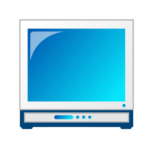Benefits for Combining Control and Operator Interfaces
 Operator interface and controller display provide many benefits to industrial computers and systems. They come in two main features. One is to combine PLC with an operator interface terminal to build a unit designed for basic machines. Another one is to combine a PC-based controller with a full-featured HMI by making the PC-based controller into an HMI offering control and operator interface for the most complex machines. For these features, people most likely can find in panel PCs.
Operator interface and controller display provide many benefits to industrial computers and systems. They come in two main features. One is to combine PLC with an operator interface terminal to build a unit designed for basic machines. Another one is to combine a PC-based controller with a full-featured HMI by making the PC-based controller into an HMI offering control and operator interface for the most complex machines. For these features, people most likely can find in panel PCs.
O/I (Operator Interface)
First of all, O/I, HMI (Human Machine Interface), and MMI (Man Machine Interface) allow an operator to manipulate or command a machine or process. Nowadays, there are more complex manufacturing environments than before. With faster machines, stronger power, higher demands with fewer problems, less downtime with increased efficiency. The operator interface might be a good choice for users to use. In other words, operator interfaces are easy to understand and use. Furthermore, what exactly is the operator interface? If one has operated an ATM then she/he is already familiar with the form of O/I. However, in the industrial world, O/I ranges from user-friendly simple keypads with text displays to complicated graphical interfaces. By graphical interfaces, meaning one can draw pictures for visualization presentations. Overall, O/I basically represents a graphical interface to a specialized computer. However, an O/I does not offer rich graphics and flexibility like Windows and Mac-based interfaces. In addition, O/I is typically built into a ruggedized terminal. O/I provides a remote interface through the buttons or switched from the equipment.
Controller-display
People might ask, what is a display controller? When devices generating a video signal, a display controller is the main part of it. In other words, the display controller produces a TV video signal in a video display system. The video display controllers create the timing of the video signals and the blanking period signal. Moreover, display controllers locate in many applications. For example, such as appliances, industrial controls, medical equipment, mobile communication devices, or touch screen monitors.
Types of Display Controllers
Speaking of display controllers, there are several different kinds of display controllers. There are video shifters, CRTC, video interface controllers, and video coprocessors. First, the most simple type of video controller, video shifters. Next, video shifters are either directly or indirectly responsible for the video timing signals. However, they normally do not access the video RAM directly. By gathering the video data from the main CPU and convert the data into a video shifter. Second, video interface controllers need a CRTC embedded in the video controller chip. Moreover, video interface controllers are much complicated compared to other controllers. Next, CRTC, also known as Cathode Ray Tube Controller, helps to generate and read the video data. Furthermore, a generator based on a CRTC chip has a broad area of capabilities. For example, from text-mode to high-resolution mode which supports lots of colors. On the other hand, video coprocessors offer an internal CPU for reading and writing the video RAM. Furthermore, video coprocessors can also convert the RAM to the video signal.
I/O
The term I/O is short for input/output. I/O describes it as any program, operation, or device that transfers data through the computer device. The output is for every transfer from one device to another device as input. Furthermore, there are also multiple I/O terminals that can be built on the communication devices. In addition, I/O units can be easily added to or removed, which provides the easiest way to maintain. When in computer storage, multipath I/O provides an enhanced performance between the CPU in a computer system. By connecting devices and computer systems together for massive storage devices through a controller.




